We’ve already discussed all the cutest Goldendoodle haircuts and grooming styles, but it’s time for a separate guide on Goldendoodle tail styles – after all, these Doods flaunt magnificent tails that deserve some extra attention of their own! In this guide, we’re going to talk about the Goldendoodle tail – how they look and what are some of the possible varieties. We’ll also give you some excellent Goldendoodle tail styles to try out on your pup. Let’s get into it!
Table of Contents
- Goldendoodle Tail Styles: Intro
- Goldendoodle Tail Styles: How Do Goldendoodle Tails Look Naturally?
- What Is The Size Of A Healthy Goldendoodle Tail?
- Different Types Of Goldendoodle Tail Styles: Top Goldendoodle Tail Cuts For Your Dood!
- Why Do Goldendoodles Have A Curled Tail?
- Should I Get My Goldendoodle’s Tail Docked?
- Goldendoodle Tail Issues And Solutions
- What Should I Do If My Goldendoodle’s Tail Gets Infected Or Injured?
- Do Goldendoodles Use Their Tails To Communicate?
- How Do You Groom A Goldendoodle’s Tail?
- Goldendoodle Tail Styles: FAQs
- Goldendoodle Tail Styles: Final Thoughts
Goldendoodle Tail Styles: Intro
The oh so amazing Golden Retriever-Poodle mix certainly has a lot to be proud of – they’ve got the most amazing personality, the most gorgeous looks, and overall they’re just absolute bundles of joy.
One awesome thing about Goldendoodles is that they can sport all sorts of different hairstyles and grooming cuts. You can even switch it up every time your pup is due for a haircut! And to give that extra oomph to your Dood’s good looks, why not make their tail shine, too.
Before we inspire you with some of the cutest Goldendoodle tail styles to trim their hair into, let’s talk about how Goldendoodle tails look like naturally and what you can expect with these Doods when they’re all grown up.
Goldendoodle Tail Styles: How Do Goldendoodle Tails Look Naturally?
As the Goldendoodle is made up of the purebred Golden Retriever and the Poodle, it’s safe to say that they inherit their tail from their parents. Both Poodles and Golden Retrievers have quite long tails naturally.
Therefore, Goldendoodle tails look just like those on their parent breeds – they are generally long and covered in fluffy fur. Depending on the individual Doodle, you may also find that their tail has a slight curve to it.
All in all, the length and thickness of the tail are determined by the genes inherited from each parent. As all pups are unique, some Goldendoodles will have longer tails, whereas others will have shorter tails. The same goes for the thickness.
In addition to that, Goldendoodles can also have three different coat types, a common thing in all Poodle mixes. Most commonly, Goldendoodles inherit a wavy combination coat that’s neither curly nor straight. However, some pups may lean more towards their Poodle heritage with thick and textured curls. And others may inherit a more straight coat, which is a nod to their Golden Retriever heritage. Let’s take a closer look.
Curly Goldendoodle Tails
When it comes to Goldendoodle tail styles, the curly coat is definitely one of the hardest to maintain and manage. Although curly-coated Goldendoodles greatly benefit from their Poodle heritage with their single-layered and low-shedding coats, they also require lots and lots of grooming to keep them healthy and looking beautiful.
Needless to say, the curls add volume and texture to the tail, making it look thicker and more lively. But keep in mind that this type of Goldendoodle tail style does require grooming every single day, as the curls can become matted if not properly taken care of.
Wavy Goldendoodle Tails
If your Goldendood has wavy fur, then they’ll likely have a wavy tail as well. As the name implies, these tails have a slight wave to them which gives it shape and body. These Goldendoodle tails also require regular brushing, but as they aren’t as prone to matting as curly Doods, you might get away with slightly fewer brushing sessions, about 3 to 4 times a week.
Straight Goldendoodle Tails
And then we have straight Goldendoodle tails – most commonly seen on Doods that have straight coats. These tails are fluffy with lots of volume and tend to look like clouds above their bottoms! Much like other Goldendoodle tail styles, they also require regular brushing and trimming for that neat look. Another thing to keep in mind with straight-coated Goldendoodles is that they usually come with a shedding undercoat, but you can greatly minimize this by regularly brushing out any loose dog hair.
What Is The Size Of A Healthy Goldendoodle Tail?
As we said earlier, all Goldendoodle tails are different and their tails can slightly range in size. The tail length of a healthy Goldendoodle can range from medium to long, with the average length being approximately 10 to 12 when measured from the base of the spine to the tip. On the other hand, Goldendoodles with shorter tails is nothing unheard of. However, this likely means that their tail has been docked.
Of course, a Goldendoodle’s tail should be muscular and well-proportioned, with strong joints and no signs of damage or disease. Even Goldendoodle tails can be prone to certain infections and other health issues, so it’s vital to keep an eye out for any changes in your Doodle’s tail. But more on that later!
Different Types Of Goldendoodle Tail Styles: Top Goldendoodle Tail Cuts For Your Dood!
Just like you can give your Dood a wonderful haircut each time they’re due for a trim, so can you experiment with different Goldendoodle tail styles to give your pup some extra character and a truly unforgettable look. Here are some great examples of Goldendoodle tail styles that you and your pup just might love!
Flag Tail
The flag tail is a rather popular Goldendoodle tail style. It features a feathery ‘flag’ look at the tip of the tail, whereas the first few inches of the base of the tail are usually shaved short. This Goldendoodle tail cut really emphasizes your pup’s beautiful long fur, making it look all nice and fluffy.
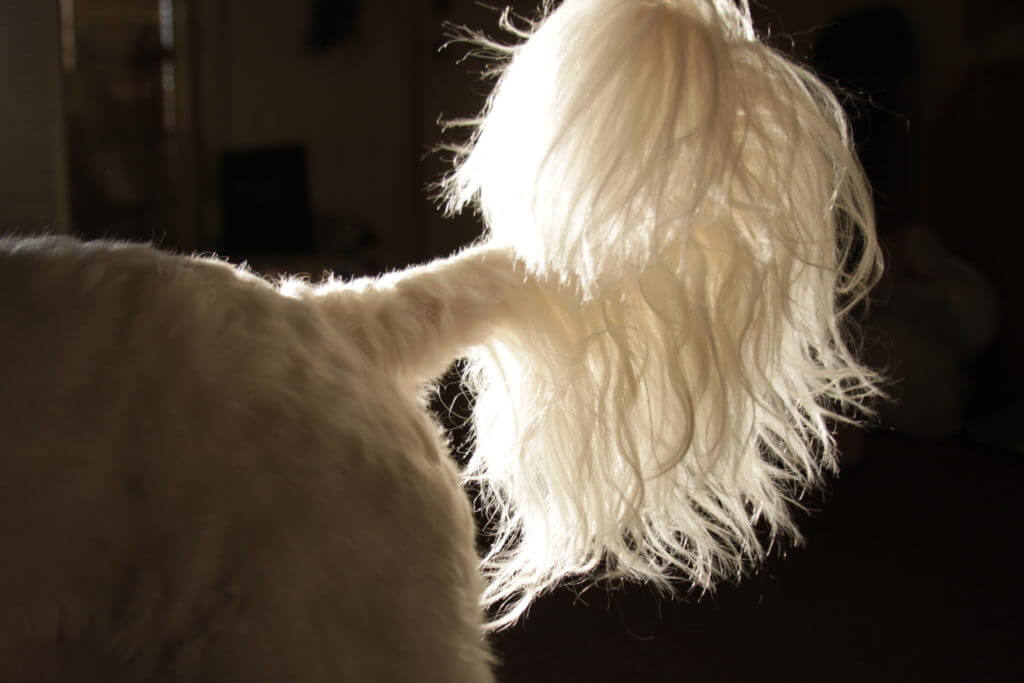
Pom Tail
The pom cut is one of the most popular grooming cuts for Goldendoodle tails and it’s commonly done with the lion Doodle cut. This cut features a tight, round puff of hair at the end of the tail that resembles a small pom-pom. Meanwhile, the rest of the tail is trimmed short to accentuate the tip of the tail. This style often requires regular trims to keep its shape and length, but it adds an extra level of fluffiness to your pup’s tail. And it will certainly catch everyone’s attention!
| @auntiesheasgrooming | Black Poodle |
| @petstylist_alexis | Black Poodle |
Teddy Bear Cut
The teddy bear cut is perfect if you want your Goldendoodle to have that real life teddy bear look. This cut involves trimming down the Goldendoodle’s fur around its body and legs to be shorter in length while leaving more fur around their face, ears and tail for a cute look. With the teddy bear cut, all edges are trimmed into a rounded shape. The amount of fur left near the tail depends on your preference — you can decide how much or how little you’d like there!
| @tentoten_dog | Brown Pup |
| @goose_thestandardpoodle | White Poodle |
Plume Tail
The plume tail definitely looks cute on Goldendoodles, but it can also be tricky to achieve and maintain. The plume cut leaves the fur on the tail long and thick, accentuating the longness of the tail. Your Goldendoodle’s tail should also feature a nice feathering so that it doesn’t look messy and chopped.
| @augiedoggieco | Bernedoodle |
| @annetift | Black Pup |
Why Do Goldendoodles Have A Curled Tail?
Some dog breeds have a genetic predisposition to curly tails, which results in their tails being naturally curled. For instance, breeds like Pugs, Bulldogs, and Chow Chows have naturally curly tails. Chow Chows, for example, are known for their puffy, curly tails that curl over their backs.
When it comes to Goldendoodle tails, their genetics will determine the outcome. As both the Poodle and Golden Retriever can have a little bit of curl in their tails, it’s not uncommon for the Goldendoodle to also inherit this trait.
However, both of the Goldendoodle’s purebred parents can also have straight tails, so there really isn’t a set standard for Goldendoodle tails, either. In fact, by the AKC breed standards, the Golden Retriever’s tail should generally be straight with a minimal upward curve. If it curls over the back or between legs, it’s considered a genetic flaw even.
Nonetheless, if your Goldendoodle is healthy and happy, then there’s nothing wrong with your pup – it’s just how they carry their tail! It all boils down to how your Dood’s parents look like and what genes are passed onto their offspring.
Should I Get My Goldendoodle’s Tail Docked?
Some Goldendoodles have their tails docked, as it’s a common procedure in Poodles (and many other purebreds). However, there really isn’t any reason for you to have your Goldendoodle’s tail docked, unless it’s a last resort due to constant injuries or other health issues affecting the tail.
But all in all, it’s usually not recommended to dock a Goldendoodle’s tail. Docking is a surgical procedure that involves amputating part of the tail, and it can be painful and risky for the dog. As your pup expresses their emotions with their tail, why deprive them of this wonderful way of communicating with us? Furthermore, it’s often considered cruel in many countries, and some vets may refuse to perform the procedure altogether if it’s only done for aesthetic purposes.
Goldendoodle Tail Issues And Solutions
A Doodle’s tail can often be an overlooked part of their body. But just like any other body part, your pup’s tail can be affected by certain health issues, especially if you’ve not paid much attention to grooming the tail and keeping good hygiene in the area. That’s why it’s so important that you’re aware of the potential issues of Goldendoodles’ tails so that you know how to keep an eye out for any worrying signs.
Infections
Goldendoodle’s tails can get infected due to a variety of reasons, such as allergies, skin irritations, and even plain old injuries. A common sign of an infection is that your pup keeps licking and biting at its tail. The affected area could also experience hair loss due to all that irritation and excessive licking. And if your Dood keeps licking and biting the tail to soothe the discomfort, it can make the matters even worse.
If you suspect that your Goldendoodle’s tail has become infected, it’s vital that you reach out to your vet as soon as possible. They’ll be able to properly assess and diagnose the situation, and prescribe appropriate medications. These oftentimes include a round of antibiotics or topical creams. Additionally, cleaning the affected area with warm water and gently drying the skin can reduce discomfort and promote healing. Above all, hygiene is vital as you don’t want any more bad bacteria getting into the infected area.
Infestations
If your pup is suffering from a parasite infestation, their tail is by no means unharmed from it. Again, a common symptom of a parasite infestation, such as fleas or ticks, is constant itchiness and the accompanied licking and biting to soothe the discomfort. Your Goldendoodle’s tail might become red and inflamed, and they may develop sores and wounds as well.
If your dog has fleas or ticks on its tail, it is important to take appropriate measures right away. Regularly checking your pet’s fur and skin for parasites should help you identify the problem quickly so that it can be treated immediately with an anti-parasite product such as spray or tablets approved by your vet. We also recommend that you regularly use a flea and tick shampoo to prevent parasite infestations, such as the ones we recommend in this guide.
Sores, Wounds, & Injuries
Inspect your dog’s tail frequently for any signs of injury or irritation caused by excessive scratching or biting at the skin. If a sore or wound is present, applying ointment as recommended by your vet may help speed up recovery. Also, avoiding activities that could cause further damage (like vigorous playtime or swimming) will give the wound time to heal properly.
Biting & Chasing The Tail
Technically, there’s nothing wrong when your Goldendoodle is sometimes biting and chasing its tail. It’s a rather common behavior in dogs. However, if it seems like a persistent issue, you might have to watch out for other symptoms and worrying behaviors.
For instance, if your Doodle keeps biting its tail all the time, it could indicate that it’s either sore or itchy due to an infection, allergy, or a skin irritation. And if your dog just can’t stop chasing its tail, it might mean that they’re bored and not getting enough mental and physical stimulation throughout the day.
Cold Tail
Cold tail, also known as limber tail, is a common issue in working dogs, but it can pretty much happen to any dog that has over exerted its tail. This basically means that your pooch has sprained its tail due to excessive wagging or overused it any other way that causes a sprain.
Although it might seem funny at first, a cold tail could cause serious pain and discomfort for your pup. They may whine to express their pain or lick and chew on it to soothe the discomfort.
What Should I Do If My Goldendoodle’s Tail Gets Infected Or Injured?
If your Goldendoodle’s tail becomes infected or injured in any shape or form, it’s crucial that you seek veterinary attention as soon as possible. We’re firm believers in good veterinary care, so if at any point you suspect a possible health issue, it’s best to leave it in your vet’s hands for a proper diagnosis and treatment.
What’s more, a good hygiene routine, a healthy diet, and good habits also play a key role in preventing infections and injuries altogether. That’s why regular brushing, bathing, and hair trimming are all integral parts of your Goldendoodle’s grooming routine as well as a diet that actually suits them.
Do Goldendoodles Use Their Tails To Communicate?
Indeed, like any other dog, Goldendoodles use their tails to communicate with the world around them. A wagging tail is a sign of happiness, while a tucked in tail indicates fear or stress. Additionally, certain positions such as high-held tails can be an indication of alertness or excitement.
The intensity and speed of the wags also have specific meanings – slow wags can mean uncertainty while faster wags typically indicate their friendliness and good mood. Allowing your pup to show how they’re feeling through their tail is a great way for them to communicate with you and others!
How Do You Groom A Goldendoodle’s Tail?
No matter what Goldendoodle tail style your pup sports, there are certain steps you should take to keep it healthy and looking fab.
First and foremost, you should brush the tail lightly with a slicker or pin brush every day to prevent knots and tangles – the main culprit leading to matted fur. Keep an eye out for any signs of discomfort as you do this, since Goldendoodle tails can be prone to sensitivity in certain areas. Brushing is also great for removing any loose hair from the coat and reduce shedding.
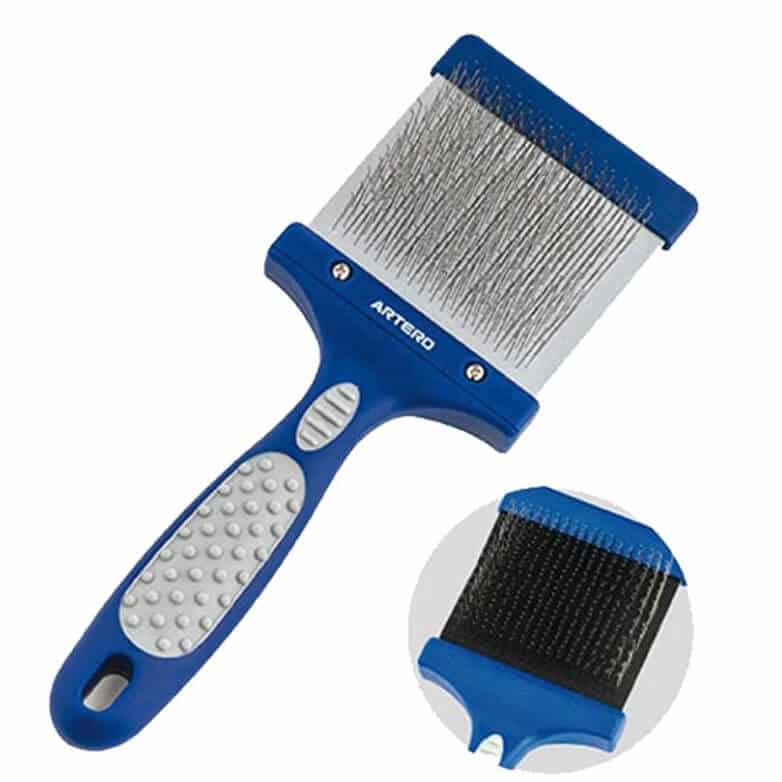

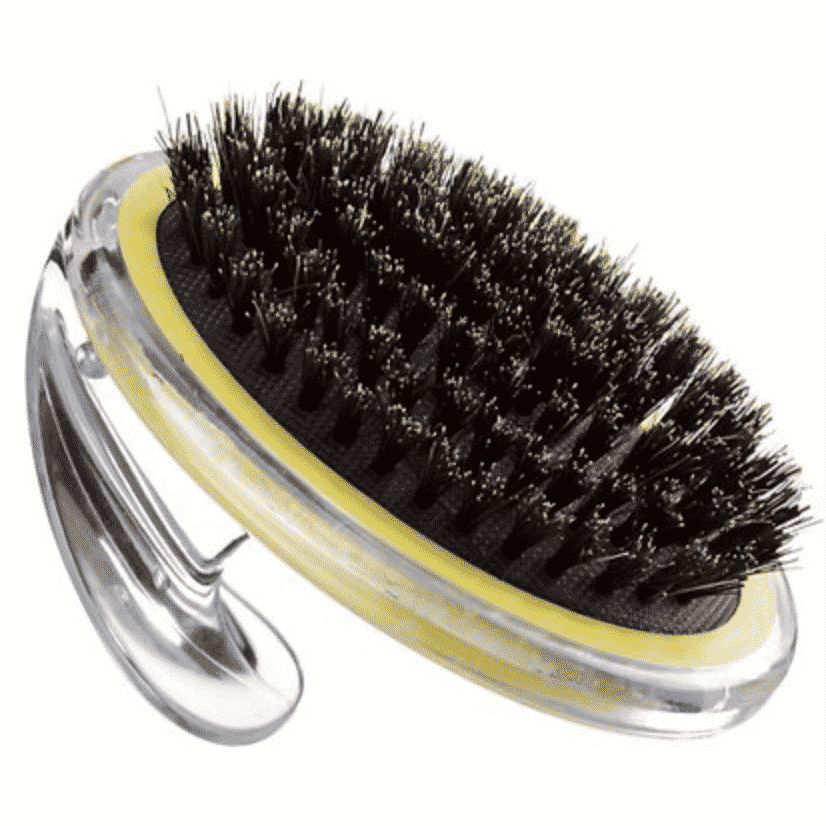

In addition to regular brushing, it’s also important that you keep an eye on the length of the fur, including on the tail. If you let it get too long, dirt and debris can easily accumulate, which can lead to knots and tangles, matted hair, skin irritations, and ultimately infections. Trimming should be done carefully with dog clippers and/or scissors about every 6 to 8 weeks or more often if necessary. If you’d like to trim your Goldendoodle’s tail at home, then we recommend our How To Groom A Doodle At Home online course for that.
Finally, regular baths are also essential for Goldendoodle tails to help keep them clean and free of dirt or debris. Use warm water and a mild dog shampoo, followed by a blow dryer set on the low-heat setting. Be sure to use gentle brushing strokes as you bathe your pup’s tail to avoid any tangles or matting.
Goldendoodle Tail Styles: FAQs
Goldendoodles are intelligent and high energy Doods, and their tails are often held in an upright position when they are excited or happy. When a Goldendoodle’s tail is down, it could be a sign of fear, stress, or anxiety. It may also mean that the dog is feeling uncomfortable or unwell. If your Goldendoodle’s tail is down constantly, it’s time to call your vet for further assistance.
A curved dog tail can mean a variety of things. It may be a sign that the dog is happy or relaxed, as a wagging tail often curves to one side or the other when your pooch is feeling content. Alternatively, it can also mean that the dog feels threatened or uncertain – in this case, the tail will tuck between their legs and curl up tightly against their body. In any case, observing your pet’s behavior in more detail can help you determine whether they need additional care or some extra affection.
If your Goldendoodle doesn’t wag its tail, it could mean a few different things. It may indicate that they are feeling uncomfortable or in pain, or they could just be relaxed and content. However, if the issue persists, it’s best to consult with your veterinarian.
If you’re thinking about training your Goldendoodle’s tail to either wag or stand still, then the best course of action would be to use positive reinforcement training with plenty of praise and tasty treats. Our Goldendoodle Training 101 guide has some excellent training methods that you can try out.
Happy tail syndrome is a condition in which dogs wag their tail with excessive force, resulting in injuries to their tail. This often occurs when a dog gets excited or overwhelmed and whips their tail against hard surfaces. Symptoms of happy tail syndrome include bleeding, swelling, and scabbing or bruising around the tail. It’s also likely that the fur will start to fall off on the tail area. If your pup is showing signs of this condition, it’s important to consult a veterinarian to ensure they receive the proper care and treatment, as injuries and open wounds can lead to infections and other health concerns.
Goldendoodle Tail Styles: Final Thoughts
It’s clear that Goldendoodle tails are more than just a cute accessory – they can be used to communicate emotions, and require special care in order to stay healthy. Whether your pup has an upright tail or one that curls between their legs, you’ll always know what emotion they’re feeling thanks to the language of wagging! So if you’ve got a Goldendoodle, don’t forget about taking good care of their tail, including trying out some cute Goldendoodle tail styles to express your pup’s unique personality!

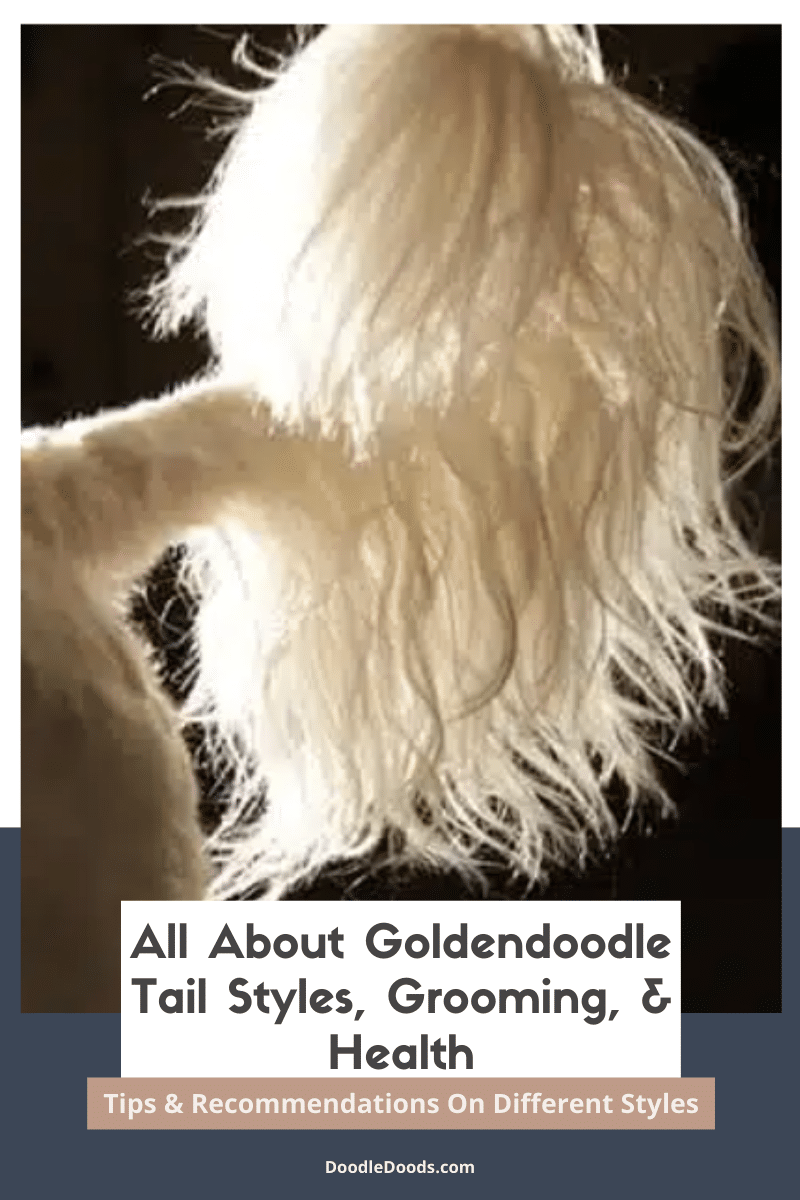
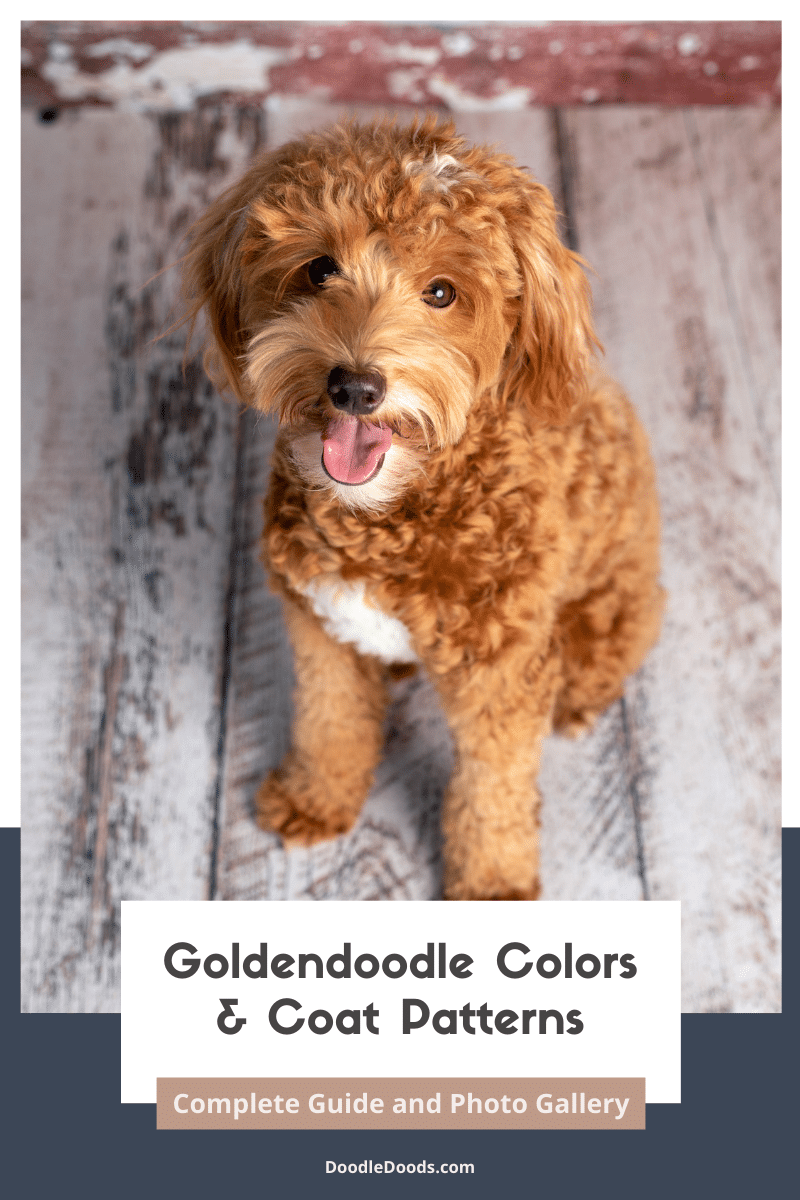
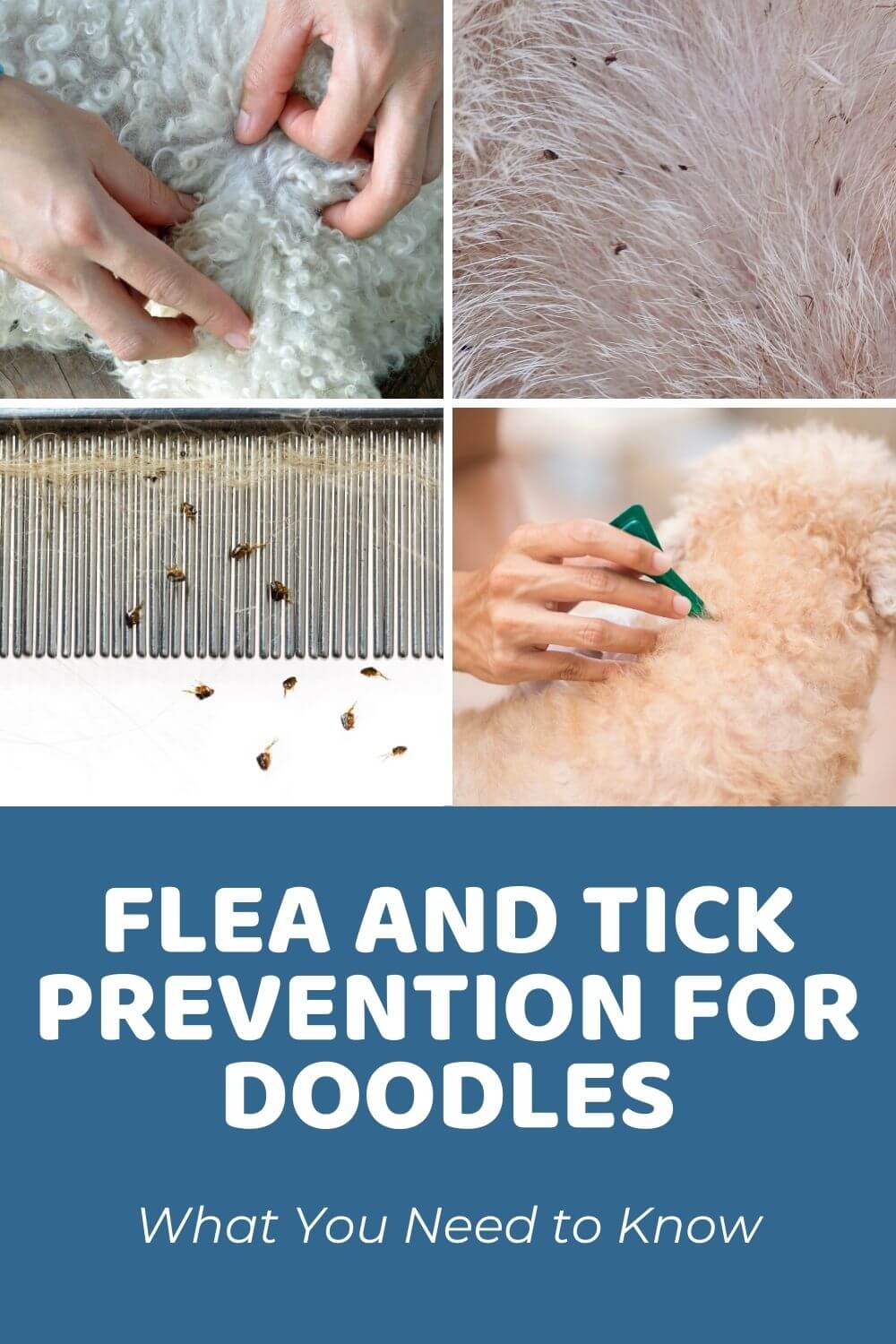
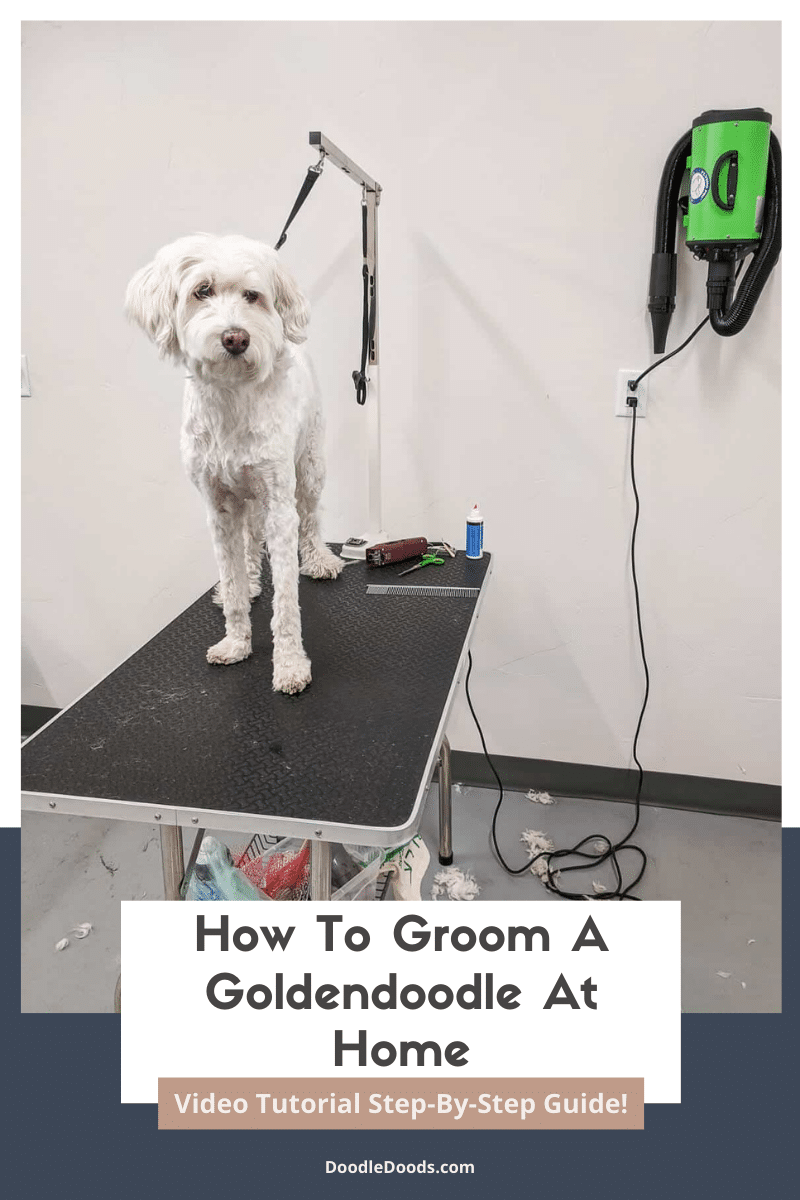
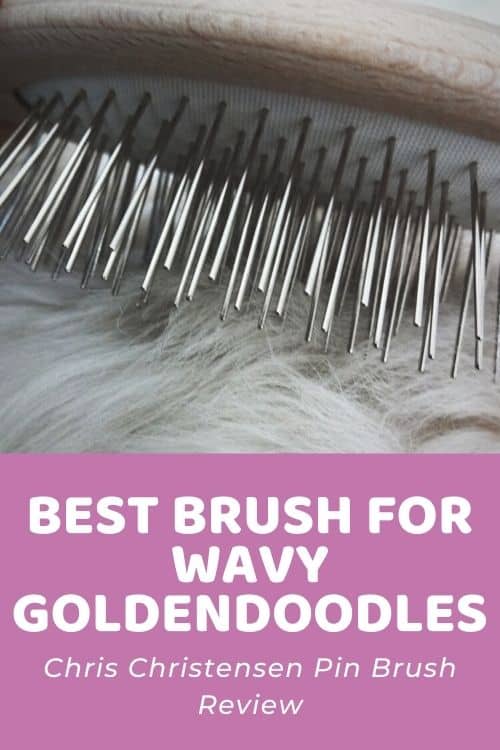

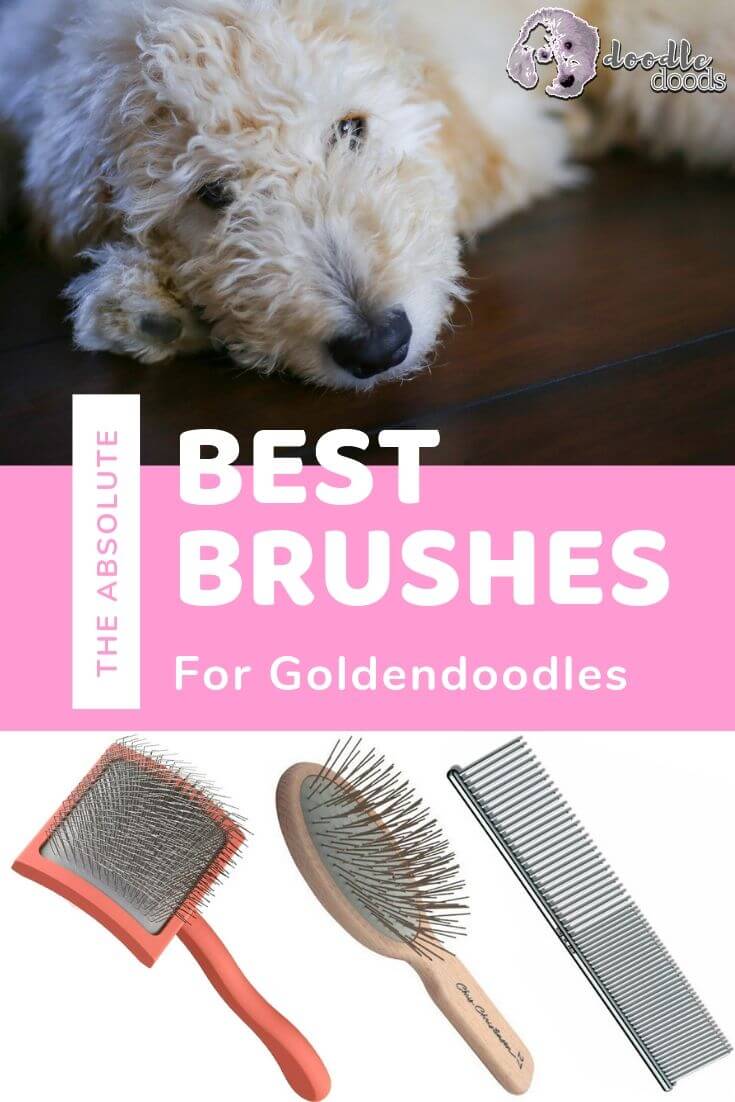


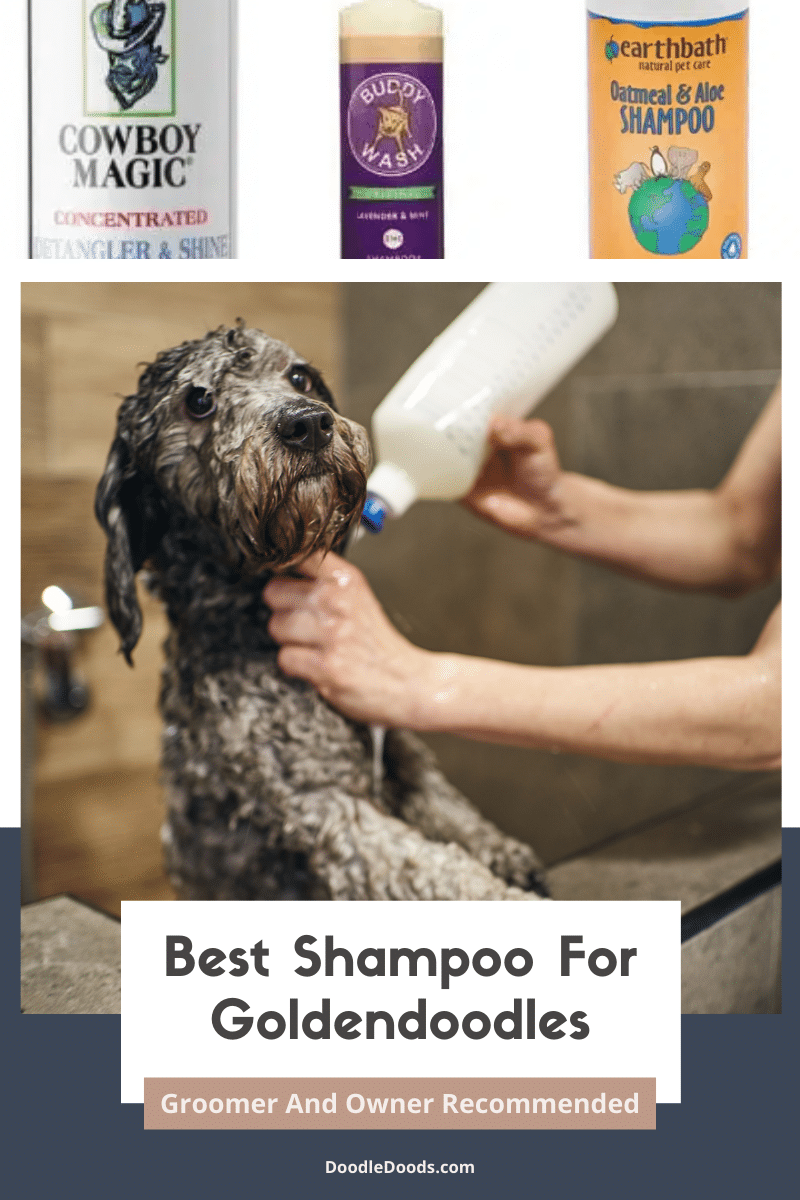
Our regular goldendoodles’ groomer salon has a new person who did not read my dogs chart before grooming her. He cut the tail short which was always a straight plume on the tail. We had them shave just the first couple of inches at the base leaving the hair long. Will the hair grow back?
November 2, 2023 at 1:11 pm